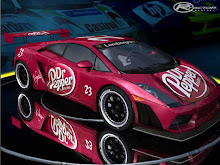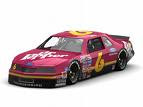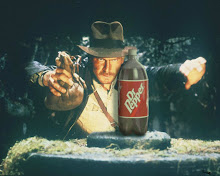I was looking at the icicles on my friend Gerry's porch Torch Lake Views when I thought that this would make a great science experiment. So here's how to make stalactites and stalagmites.
So here's how to make stalactites and stalagmites.
Collect two glass jars, two fishing sinkers, epsom salts, string and a small plate. Fill the glass jars with hot water from the tap and stir in as much epsom salts as will dissolve. Wet a piece of 18 inch long string, tie a sinker to either end and hang it in the solution as shown in the diagram. Leave it undisturbed in a warm place for a week, then come back daily and check it out.
Here's a handy saying to help you remember which is which:
Stalactites have to hold on tight to stay on the ceiling of the cave. Stalagmites have to be mighty to stand up on the floor of the cave.
* You can also try this with baking soda, salt or sugar. And hey - add some food coloring just for fun!
Try looking at your crystals through a magnifying glass. What shape can you see?
Word Bank
week, salt, soda, cave, warm, add, epsom salts, magnifying, crystals, diagram, ceiling
Sunday, December 14, 2008
Stalactites hold tight!
Posted by
Leslie
at
9:41 AM
0
comments
![]()
Friday, December 12, 2008
Lost in Space

Do you ever feel like you want to get lost in space? Well now you can when you make your own balloon rocket.
The scientific principles involved are the uses of pressure to cause movement. In other words, you are learning how to make a rocket fly.
Materials:
- a balloon
- a paper bag
- string
- a straw
- sticky tape
- a tape measure
Procedure:
Decorate your paper bag so that it looks like a rocket. Attach the paper bag to a straw. Put the straw through the string that is stretched tight across the room. Put the balloon in the bag and blow it up.
Ready? Let it go!
What is Happening?
This balloon rocket experiment uses the pressure difference between the gas inside the balloon to that outside the balloon. The gas inside moves towards the area of lower pressure. The gas pressures are moving towards an equal state; technically this is called moving toward equilibrium.
This experiment is a good demonstration of the ability of pressurized air to make an object move.
Posted by
Leslie
at
10:17 AM
0
comments
![]()
Thursday, December 11, 2008
Can you get an Egg into a Bottle?

Is it really possible to get an egg into a bottle? It is, and here is how you do it.
Drop three lit matches into a glass bottle that has a narrow neck (a 600 mL bottle works well.)
Quickly put a peeled, hard-boiled egg on the mouth of the bottle.
The egg should squeeze its way through the mouth of the bottle and get inside it.
What happens you may ask? The lit matches heat the air inside the bottle. When air is heated it expands and takes up more room. As the heated air expands, some of it escapes out the bottle. When the matches go out, the air inside the bottle cools and contracts (and takes up less room), and this makes the pressure inside the bottle less than the pressure outside. The greater pressure outside the bottle sucks the egg into the bottle.
Posted by
Leslie
at
10:58 AM
0
comments
![]()
Labels: egg in a bottle
Thursday, December 4, 2008
STOP PRESS! It's snowing in Canberra!

Wrap up tight in that pashmina, Ms S. It's snowing on the Science website in cool Canberra.
Can you make your own snow? Here's a fun link if you want to give it a try.
Posted by
Leslie
at
7:52 AM
0
comments
![]()
Labels: snow
Wednesday, December 3, 2008
Seahorses have a secret...
 And the secret is that the male carries the eggs.
And the secret is that the male carries the eggs.
Seahorses live in small compacted places. They like to eat shrimp and lots of other small kinds of fish. The eggs are in the male's pouch for nine days then they hatch. Some Seahorses hatch 2,000 to 3,000 eggs.
There are 32 different species of seahorses. They live from three to five years in the wild.
The Latin name for a seahorse is Hippocampus. You can also read more about seahorses here. The one in the picture lived a very long and happy life.
Posted by
Leslie
at
2:44 PM
1 comments
![]()
Labels: seahorses
Tuesday, December 2, 2008
Somewhere over the rainbow
 What you need to make a jello rainbow:
What you need to make a jello rainbow:Measuring jug
Boiling water 125 mls
Cold water 125 mls
Packets of different colored jello
Directions:
1. Empty jelly crystals into a measuring jug.
2. Add half a cup of boiling water. Get an adult to do this.
3. When it is stirred together, add a half cup of cold water.
4. Stir until the jelly crystals are completely dissolved.
5. Pour into a container and refrigerate until it is almost set.
6. Do steps one to five several times using different colors of jello.
7. Use a glass container to layer the many colors of jello to make a rainbow effect. Refrigerate until it is set hard.
Questions:
Did you ever drink unset jello? Try it, you might like it!
Did you ever try to make a jello sculpture?
Facts:
- In 1845, industrialist Peter Cooper (who built the first American steam-powered locomotive, the Tom Thumb), obtained a patent for making powdered gelatin.
- Some discontinued flavors are: Italian salad, pickle and bubble gum.
The lyrics for the Aeroplane Jelly Song:
I like Aeroplane Jelly, Aeroplane Jelly for me.
I like it for dinner, I like it for tea,
A little each day is a good recipe!
The quality's high, as the name will imply,
It's made from pure fruit - one more good reason why
I like Aeroplane Jelly, Aeroplane Jelly for me!
Posted by
Leslie
at
9:52 AM
0
comments
![]()
Supersize me!
The kitchen is the best place to do science experiments! Today, we are going to make pancakes!
Did you know, baked goods are like balloons and need gas to rise? Rising agents like baking powder and baking soda produce carbon dioxide, and trapped air and steam are additional sources of gas. The protein in eggs and flour provide a stretchy structure that traps the gas as it expands due to heat, causing the batter to rise.
If you like pancakes and want to make some then follow these instructions. 
Ingredients:
1 cup self-raising flour
1 cup milk
1 egg
Method:
1. Pre-heat a large non-stick frying pan.
2. Add all ingredients into a bowl and mix until combined.
3. Lightly grease the pan with butter or cooking spray.
4. Cook large spoonfuls of batter until bubbles burst on top and the edges start to go dry.
5. Turn and cook other side until golden.
Delicious toppings:
Maple syrup, lemon juice and sugar, jam.
Posted by
Leslie
at
9:42 AM
0
comments
![]()
Labels: Recipes
Monday, December 1, 2008
Stun your friends with a playdough sculpture
Ingredients:
half a cup of salt
1 cup of plain flour
2 tablespoons cream of tartar
1 cup of water
1 tablespoon of oil
food colouring
What to do:
- Mix all the ingredients together in a bowl.
- Knead it until the dough is pliable.
- Store it in a well sealed plastic bag or a container.

Things you can make and even bake:
An ashtray, Christmas ornaments, a pendant for a necklace, animals, or a sculpture.
FACTS:
Salt is used as a preservative.
Salt is the most common food seasoning.
Over consumption of salt can lead to high blood pressure.
Salt is bad for plants and can kill them.
Posted by
Leslie
at
9:48 AM
0
comments
![]()
Bread Making Word Bank
bread, yeast, breadmaker, flour, water, loaf, crust, ingredients, dough, knead
Posted by
Leslie
at
9:36 AM
0
comments
![]()
Bread Making
What You Need
Water
Flour
Yeast
Butter
Here is a link to make bread at your home. Breadmaking
Posted by
Leslie
at
9:17 AM
0
comments
![]()










